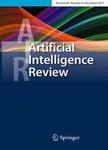版权所有:内蒙古大学图书馆 技术提供:维普资讯• 智图
内蒙古自治区呼和浩特市赛罕区大学西街235号 邮编: 010021

作者机构:Univ Malaga Dept Elect Technol Malaga Spain Univ Las Palmas Gran Canaria Unidad Oceano & Clima Unidad Asociada ULPGC Inst Oceanog & Cambio GlobalCSIC Canary Islands Spain
出 版 物:《ARTIFICIAL INTELLIGENCE REVIEW》 (人工智能评论)
年 卷 期:2023年第56卷第11期
页 面:12853-12884页
核心收录:
学科分类:08[工学] 0812[工学-计算机科学与技术(可授工学、理学学位)]
基 金:CRUE-CSIC agreement with Springer Nature
主 题:Marine plankton Pattern recognition Image processing Plankton classification
摘 要:Plankton are an important component of life on Earth. Since the 19th century, scientists have attempted to quantify species distributions using many techniques, such as direct counting, sizing, and classification with microscopes. Since then, extraordinary work has been performed regarding the development of plankton imaging systems, producing a massive backlog of images that await classification. Automatic image processing and classification approaches are opening new avenues for avoiding time-consuming manual procedures. While some algorithms have been adapted from many other applications for use with plankton, other exciting techniques have been developed exclusively for this issue. Achieving higher accuracy than that of human taxonomists is not yet possible, but an expeditious analysis is essential for discovering the world beyond plankton. Recent studies have shown the imminent development of real-time, in situ plankton image classification systems, which have only been slowed down by the complex implementations of algorithms on low-power processing hardware. This article compiles the techniques that have been proposed for classifying marine plankton, focusing on automatic methods that utilize image processing, from the beginnings of this field to the present day.